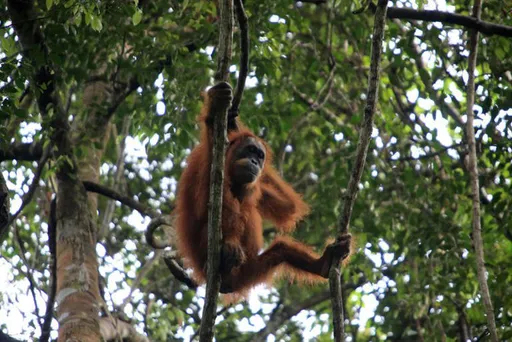Trees can ‘talk’, although their communication occurs via scent rather than acoustics like humans and other mammals. Each tree species has a unique bouquet of volatile organic compounds (VOC) that it emits, which animals can distinguish. For example, leaf-eating insects hone in on their host trees via following volatile organic compounds.
Yet the trees are not entirely helpless when it comes to leaf-eating insects finding and munching on their leaves, and defend themselves. How do they do it?
Dr Martin Volf, first author of a recent study, tells TRT World that he was inspired to do this experiment because “Forest canopies are extremely diverse environments. Most of the species dwelling there are insect herbivores that feed on trees.” He adds: “So, I have always been extremely interested in exploring what strategies trees use to defend against the plethora of natural enemies they face.”
“When attacked by herbivores, trees start releasing small organic compounds carried by air,'' Volf notes in an email to TRT World. “Predators can pick up these scents to locate the tree under attack. This allows them to find the herbivores and feed on them.”
The trees produce bitter substances that the leaf-eating insects do not like to ingest, and they also release VOCs to alert different parts of the trees.
This leads to the trees attracting other animals such as birds and predatory insects which, the news release notes, have learned to interpret the meaning of VOCs. These animals fly to the tree, and start eating the leaf-eating insects, ridding the tree of pests.
Thus the trees’ screams, so to speak, are heard across the forest and the trees are assisted in purging themselves of leaf-eating insects.
“The fact that plants can chemically attract parasitic wasps, predatory bugs and even birds when attacked by pests had been known for some time,” says Volf in a news release. Volf led the study at the German Centre for Integrative Biodiversity Research (iDiv), and now works at the Biology Centre of the Czech Academy of Sciences.
“However, this defence mechanism had never been tested for adult trees in a realistic environment so far,” Volf adds.
“This was made possible by a combination of research methods, from animal behaviour experiments at the height of 40 metres on iDiv’s Leipzig Canopy Crane in the floodplain forest to molecular analyses of plant scents through metabolomics,” he notes. Metabolomics is “the large-scale study of small molecules, commonly known as metabolites, within cells, biofluids, tissues or organisms” – in this case, tree leaves.
The researchers simulated herbivore feeding on leaves in the spring by spraying branches in the crowns of adult oaks (Quercus robur L.) with methyl jasmonate (MeJA), which they say is “used in ecological studies to simulate herbivory by chewing-insects”. This allowed them to test the effect of induced defence – the plant’s response to injury by predators or mechanical injuries.
The researchers also superglued green non-toxic plasticine dummy caterpillars (3mm in diameter, 30 mm in length) on the oak leaves, to simulate an attack by real caterpillars in addition to the methyl jasmonate.
They left the caterpillars in place for 2.5 weeks during the induction period. They checked them for beak and bite marks every few days and replaced missing ones. They also made note of the abundance of real caterpillars.
The researchers also tested leaves in the laboratory with real moth caterpillars. They gave the insects both induced and non-induced (control) leaves to feed on. The caterpillars of the gipsy moth (Lymantria dispar) avoided induced leaves, showing that the trees had produced VOCs that the insects did not want to eat, such as tannins that repelled the bugs.
Volf tells TRT World that the researchers worked with oaks in this particular experiment. But, he says, they also work with “lime trees, hornbeams, willows, or tropical trees, such as figs, in our other projects. The whole experimental setup is rather complex.”
He sums up the complexity in a few words for TRT World readers: “In short, we either expose the trees to real herbivores or trick them to think they are under attack by triggering a hormonal response in them,” he explains. “We then monitor what changes in their chemical defences this real or simulated herbivory elicits and explore how the resulting changes affect predators and herbivores.”
The news release notes that predators (such as birds, parasitoid wasps and predatory bugs), according to the researchers, visited the induced branches more than the control branches. They were called to help the tree – and feed on what was feeding on the tree – by the tree.
Asked about the most important takeaways from the experiment, Volf tells TRT World that “The main message is that ecological interactions between organisms are fascinatingly complex. Very rarely there are just two species interacting.”
He notes that “More often we see complex interaction webs. Here, trees used chemical defences to attract predators in order to get rid of herbivores. If we want to understand these interactions, and possibly benefit from them in terms of pest control, we need to study them in their full complexity.”
Volf says he particularly enjoyed the interdisciplinary nature of this project: “Such a collaboration between biologists, ecologists, and chemists is necessary to understand natural processes and how they may be changing, especially in response to the ongoing global change.”
























